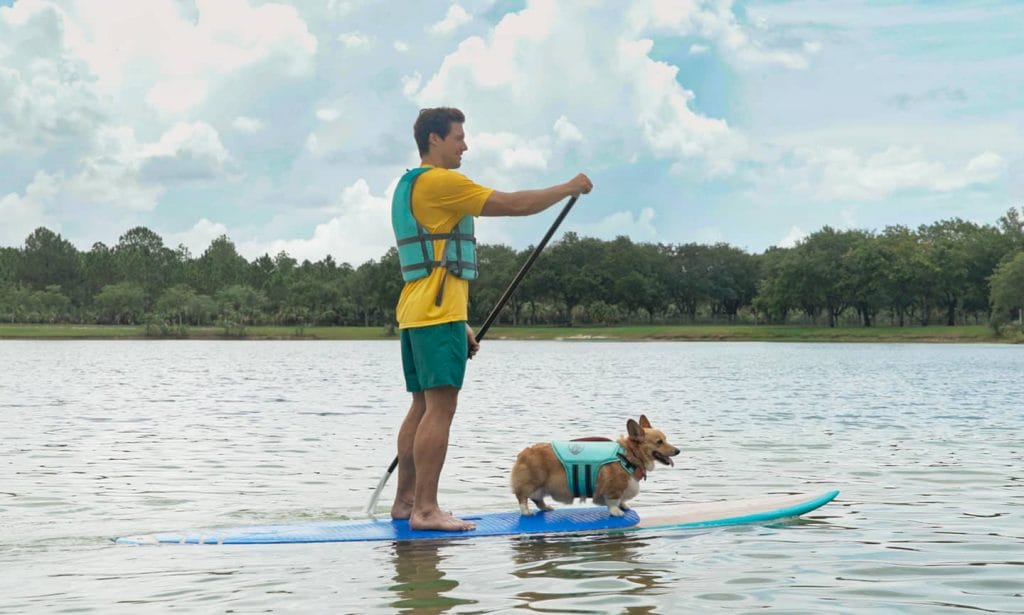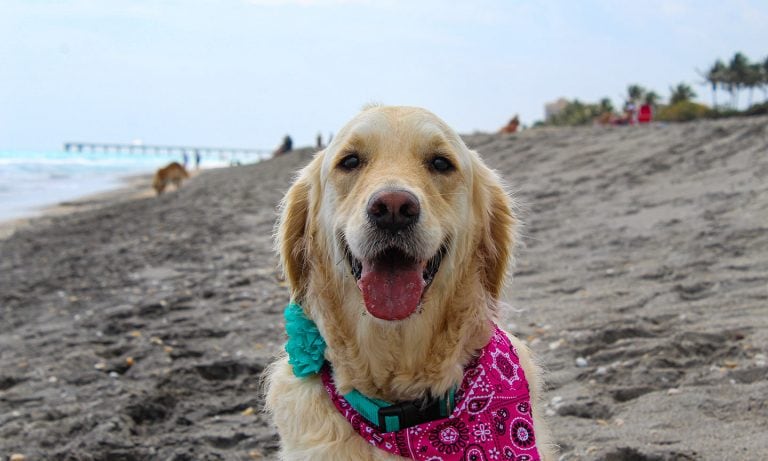Imagine yourself exploring the open water on a serene stand up paddle boarding adventure. You have the breeze in your hair, the sun on your skin and … your dog by your side? That’s right—your dog can join you on your SUP adventure. (SUP is short for “stand up paddle board” or “stand up paddle boarding”.) It just takes some time and practice to show them the ropes. So if you want to get started learning how to stand up paddle board with dogs, where do you begin?
We’ve got tips from Maria Christina Schultz, a certified pet trainer, American Canoe Association (ACA) instructor, and author of “How to SUP With Your PUP”; and Arielle Shipe, a yoga and meditation teacher, certified nutrition coach and GoPro Mountain Games athlete based in Aspen, Colorado, who frequently paddle boards with her dog, Tabor.
The Benefits of Stand Up Paddle Boarding With Dogs
Paddle boarding has plenty of benefits for you: exercise, fresh air, a break from the daily hustle. But what’s the upside to bringing your dog along for the ride?
For one, paddle boarding can lead to some serious bonding with your pup. In fact, Schultz says, SUP combines many dogs’ two favorite things: quality time with you and the great outdoors. “They can move around the deck of the board, stand on the nose and watch the world go by,” Schultz explains. Plus, “Being on the water with my dogs is dedicated time we get to have no matter what the crazy week has brought us.”
Beyond the bonding, paddle boarding is just plain calming—for you and your dog. Water soothes and relaxes her three Australian Shepherds, Schultz says: “It’s a detox from stress.”
Can My Dog Learn to SUP?
You might be wondering, will my dog be any good at this? Is my doggo too old to learn to SUP?
If the activity is presented in a way that’s positive, fun and done at the dog’s pace, most pups can learn to join you on your paddles, Schultz says. The biggest factor? Your dog’s feelings about the water. “If your dog is afraid of the water, I would recommend a different sport,” she says.
Age, on the other hand, isn’t typically a barrier—dogs can learn at any age, Schultz says. But it can be easier to start paddle boarding with your dog at the puppy stage, when they’re most open to learning and experiencing new things. As with all new physical activities, it’s best to check in with your vet before starting SUP training.
How Long Will It Take My Dog to Learn?
It can take anywhere from one day to several months for your dog to learn how to be confident and relaxed on the board. The quality and frequency of your training sessions can speed up or slow down the process, but Schultz says your dog’s unique personality has just as much to do with it. After all, each pup has different abilities and tolerance for training and sitting still. Case in point: Schultz’s oldest dog Riley learned to SUP learned in a week, but Kona, her second dog, took four months. It’s up to you to stay patient and give your dog as much time as they need.
A pro tip from Shipe: Before your paddle board training sessions, take your dog for a walk, to the dog park or give them some vigorous playtime—any type of exercise they typically enjoy. “We found it helpful to give Tabor some exercise first so she could be more relaxed,” Shipe explains.
Paddle Boarding Gear For You and Your Dog
- A high quality paddle board that’s sized properly for the human-dog duo. Any size of board will work with small dogs, but for bigger dogs, choose a board that’s longer and wider for extra stability. Schultz recommends a board between 11 and 12.5 feet long and 32 inches wide, but your preferences may vary.
- A paddle that’s sized properly for your body type. It should be as long as you are tall, plus 10 inches.
- Human life jacket
- Dog life jacket with a handle along the back for easy lifting in case they fall or jump into the water
- Training treats
- A treat pouch
- Dry bag to secure valuables
How to Stand Up Paddle Board With Dogs: Step-by-Step Instructions

1 Place the board on dry land in a familiar, safe environment.
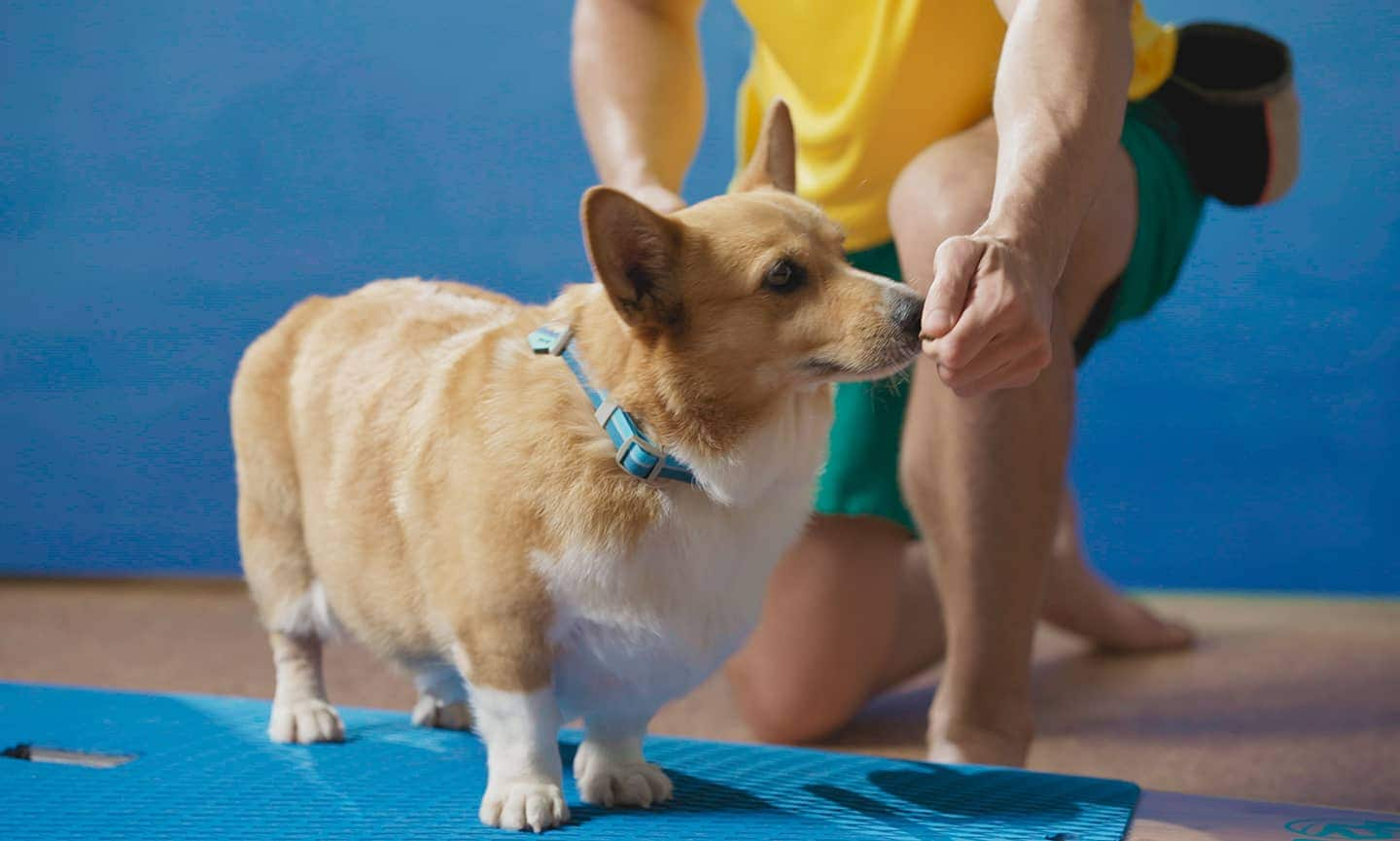
2 Lure your dog onto the board.
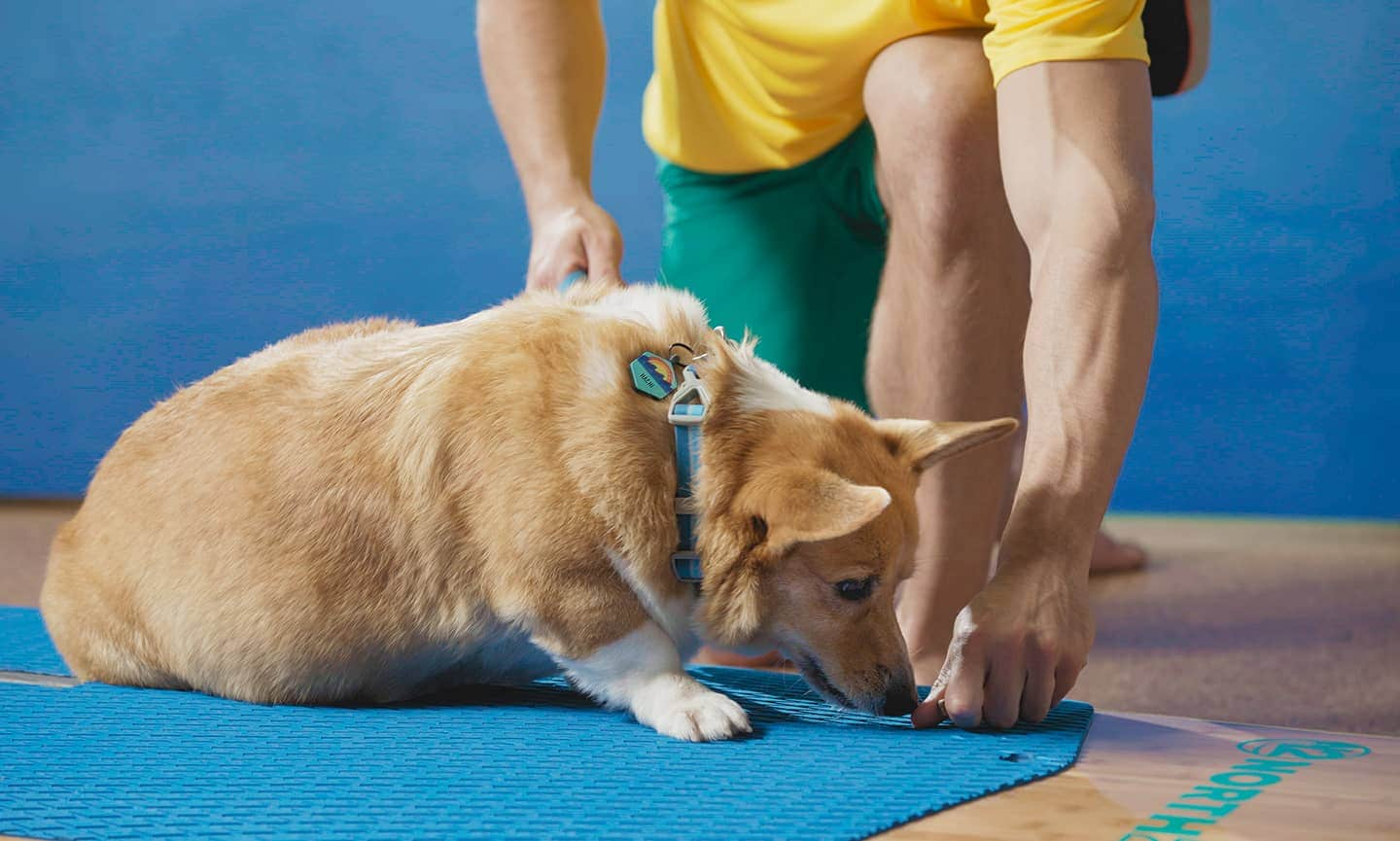
3 Practice “sit,” “down” and “stay” on the board.
With your dog on the board, start asking for behaviors like sit, down and stay. Reward them with a treat each time your dog does what they’re told. Those commands will come in handy later!
If your dog isn’t already trained in these basic commands, work on those skills before you transition to the board. Follow our training tips:
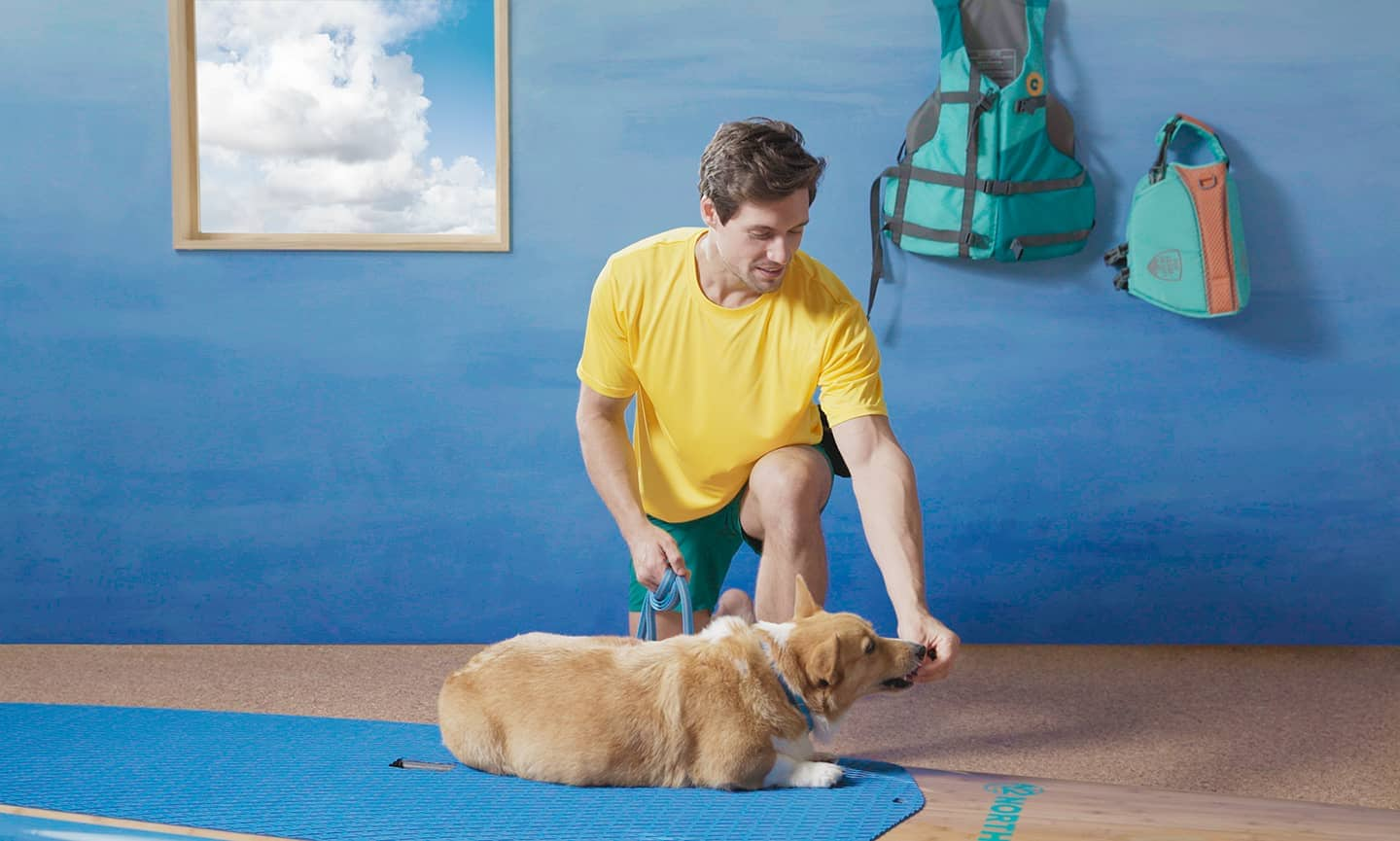
4 Gradually increase their “stay” time while on the board.
Ask your dog to sit and stay, or lie down and stay, and gradually increase the duration of time in the stay. Start at a duration your dog can easily handle, and work up to two to three minutes at a time.
Pro tip: It’s a good idea to work in a release command like “hop off,” for example, that gives your dog permission to exit the board. Say “hop off,” then lure your dog off the board and give a treat when all four paws are off the board. Over time, your dog will learn to associate “hop off” with stepping off the board.
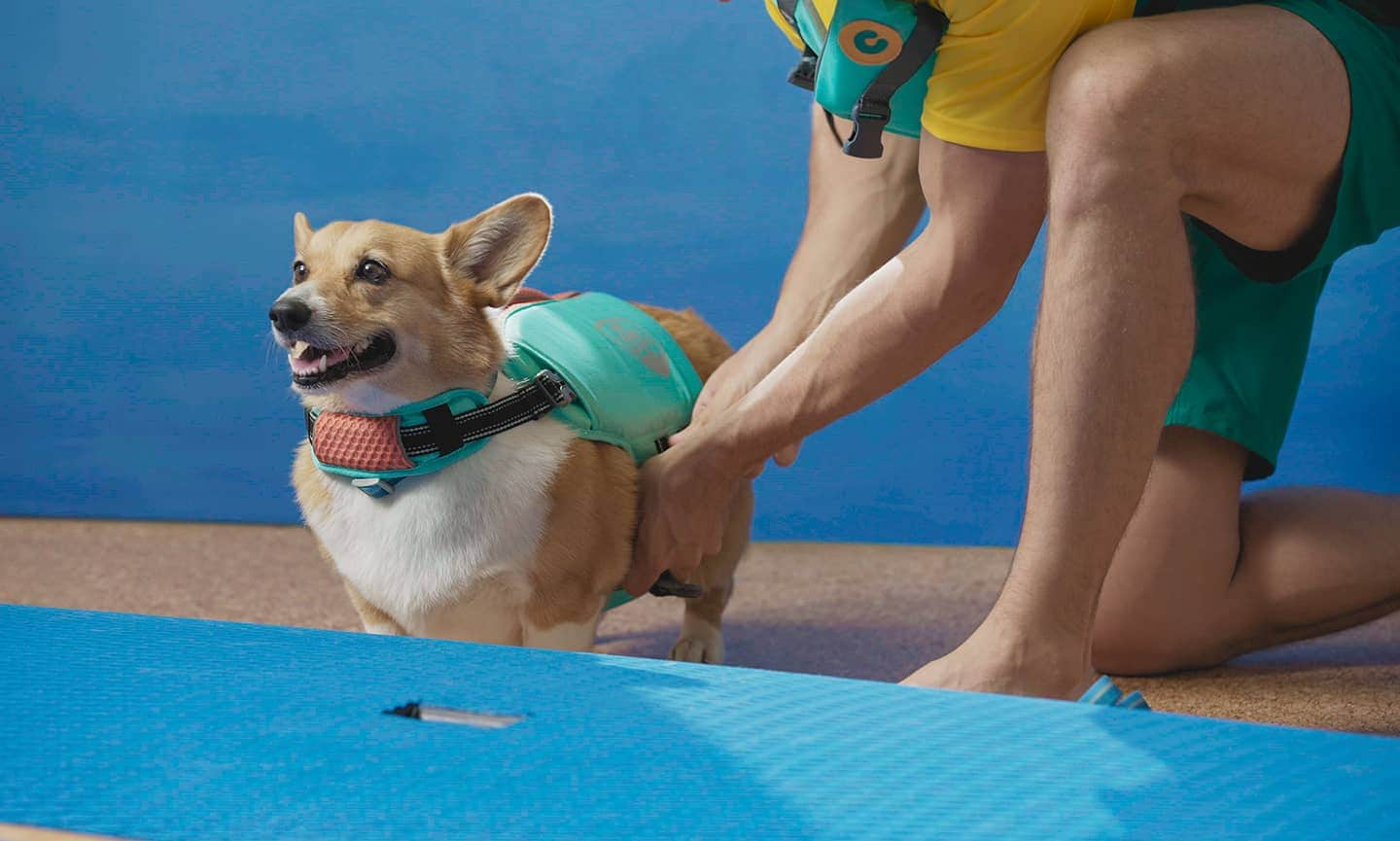
5 Introduce the dog life jacket.
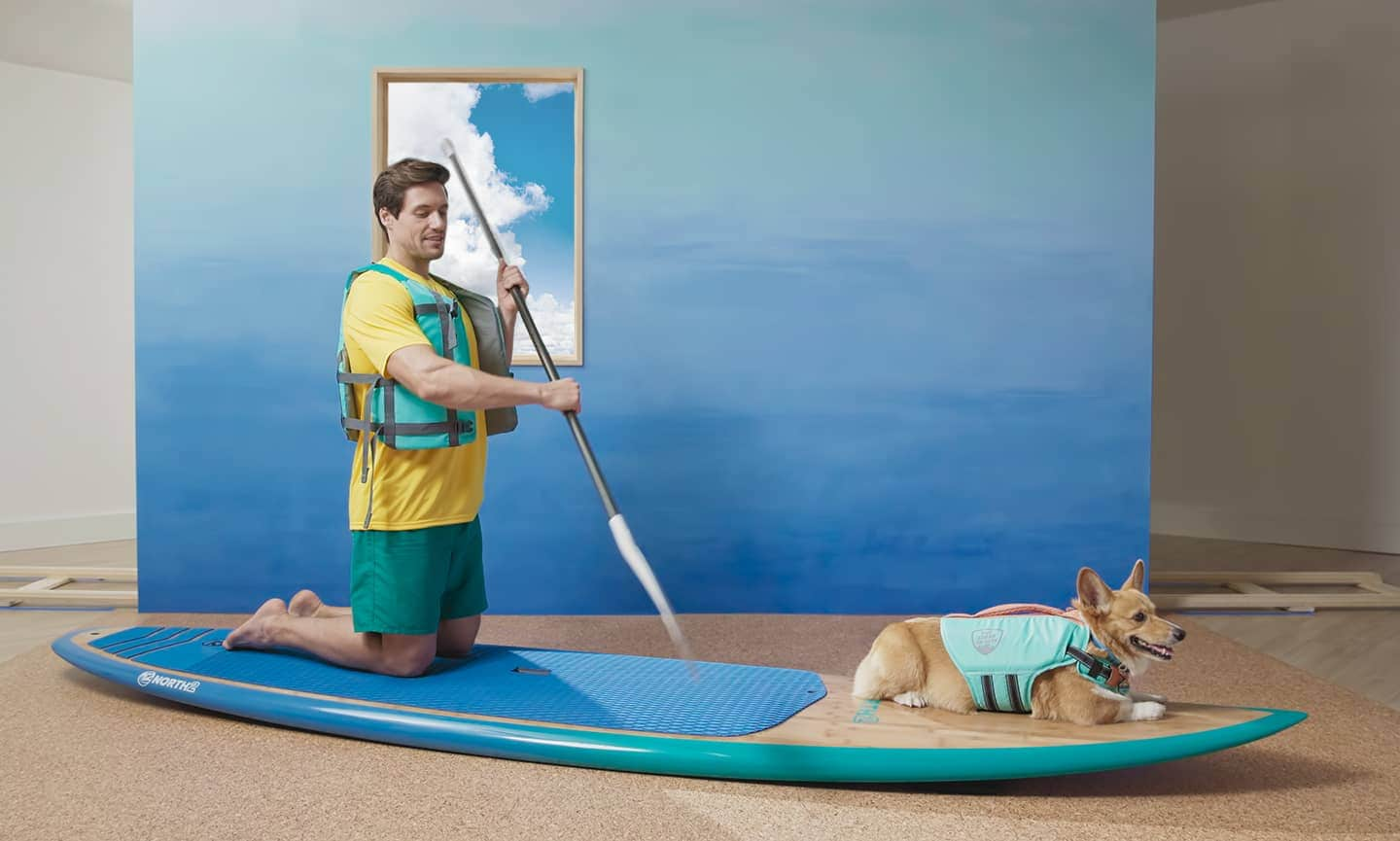
6Introduce the paddle.
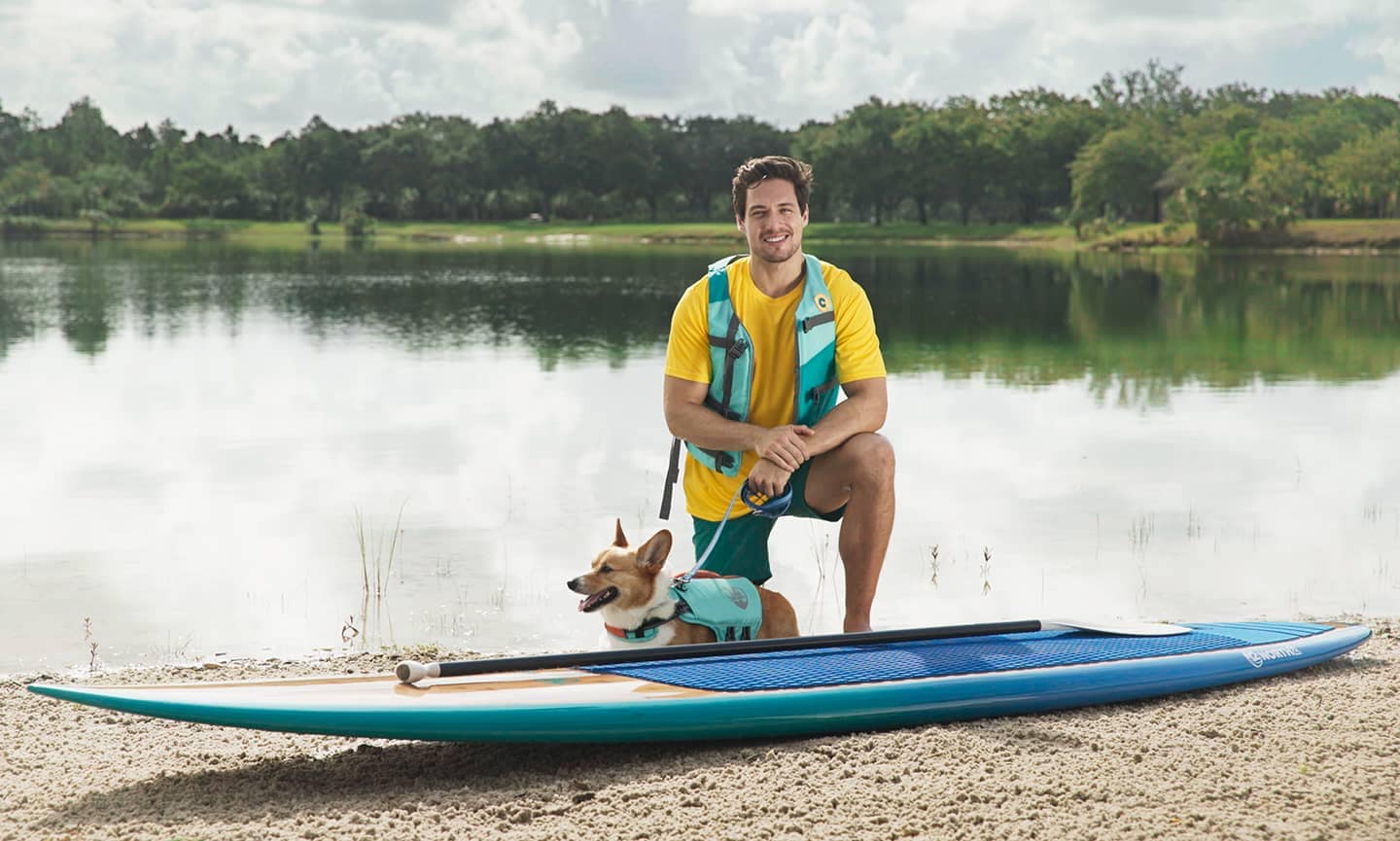
8Practice beside the water.
Once your pup is comfortable with in-home training, it’s time to move to the water. Find a practice spot with calm water that is not near people or other animals.
Start by placing the board near the water and practice sit-stays and down-stays again on land.
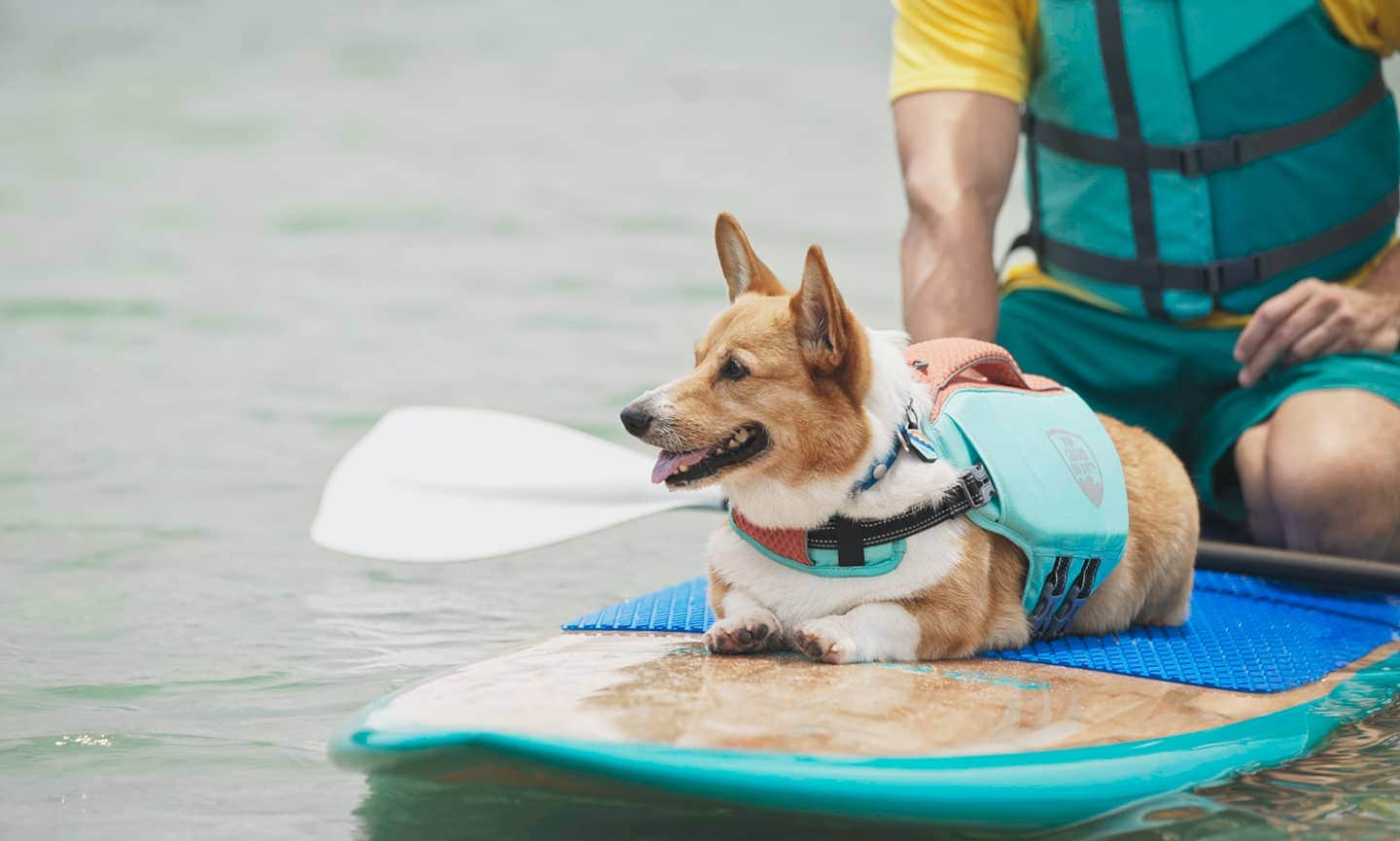
8Enter shallow water.
If your dog is calm, move the board to shallow water. Get on the board before your dog in the kneeling position, then ask your dog to join you. Your dog can jump onto the board from the land or from a dock, or if the water is shallow enough, they can wade up to it and hop aboard.
When your dog is on board, ask for a sit-stay or a down-stay right away.
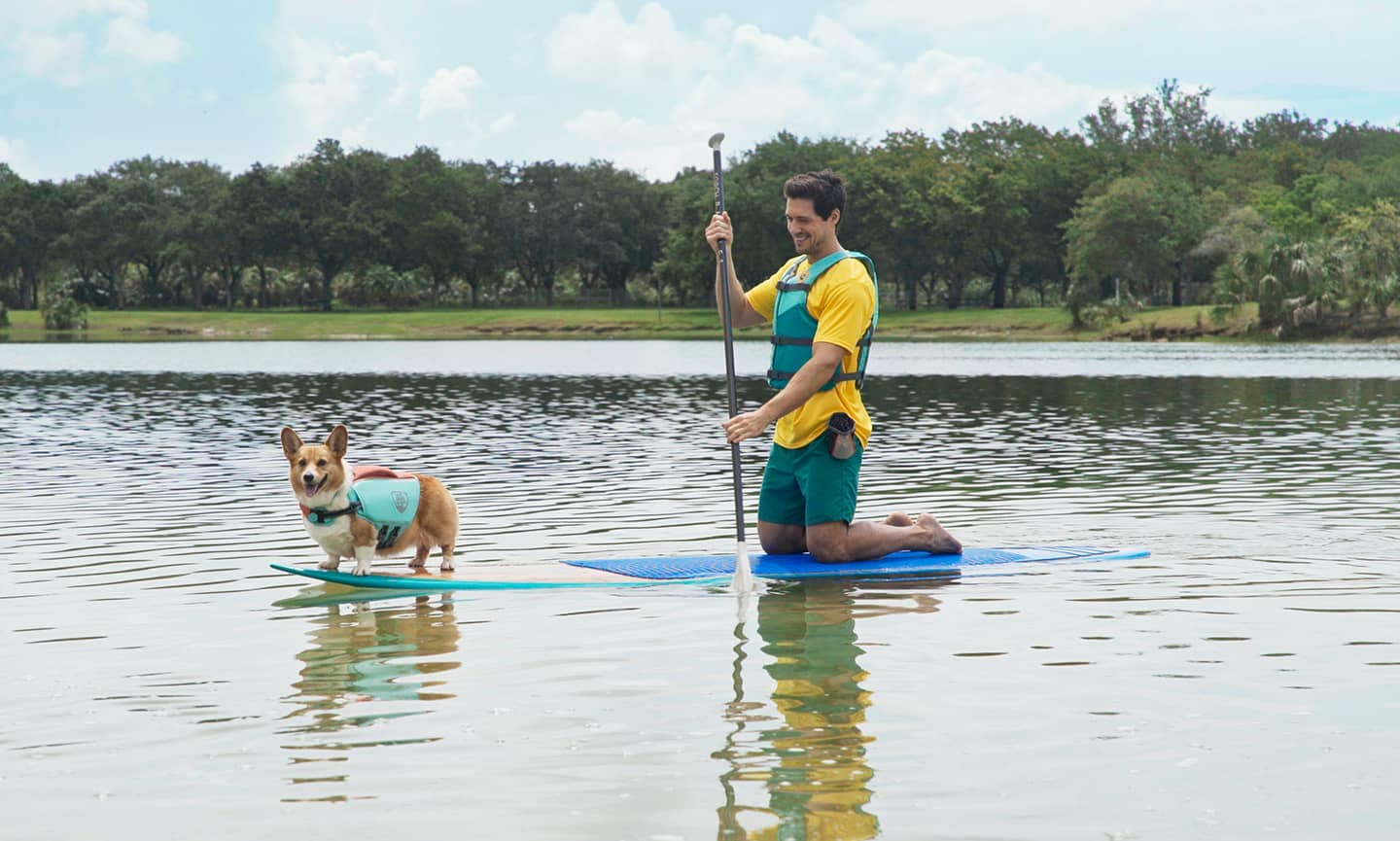
9Paddle in the kneeling position.
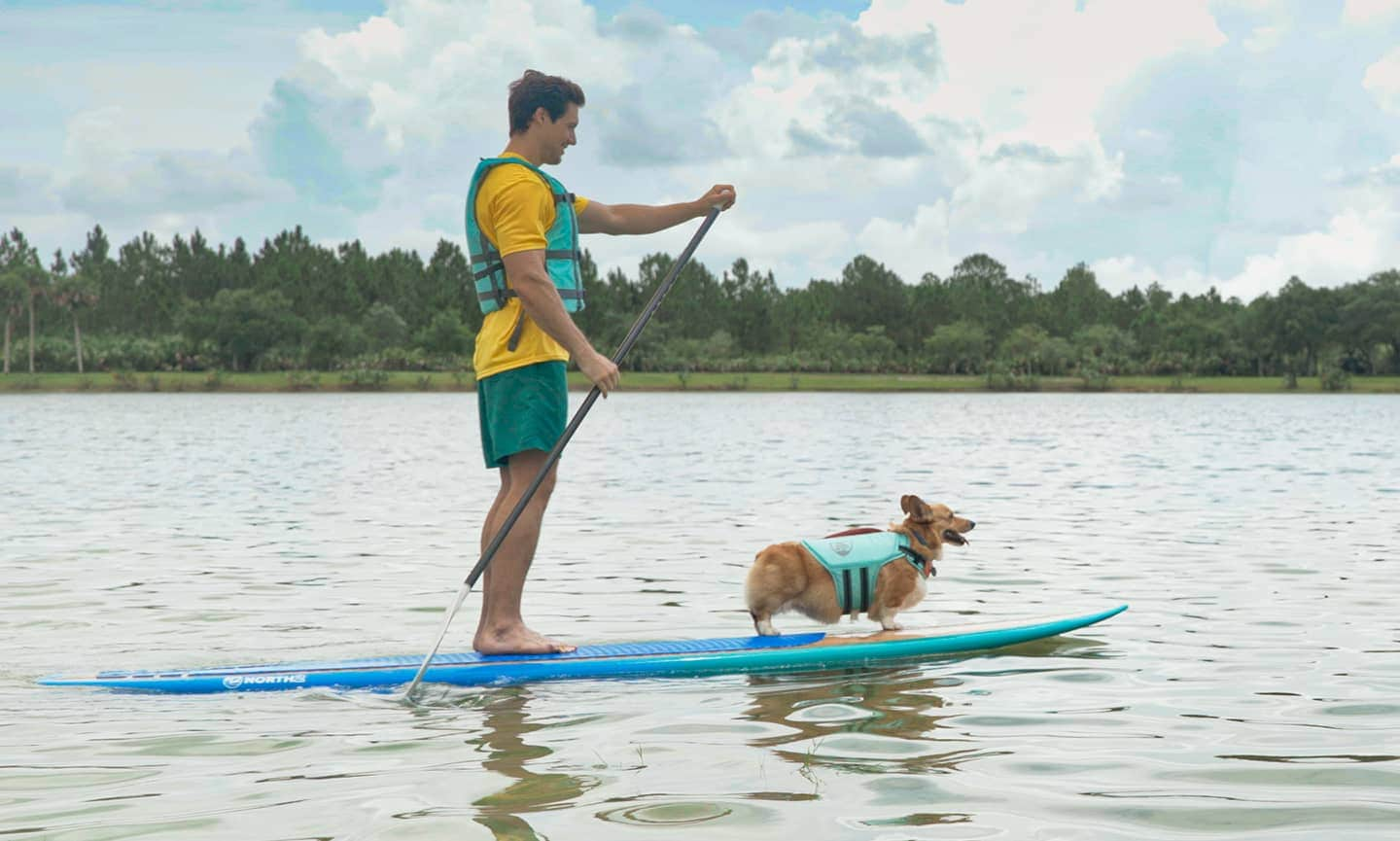
10Stand up and paddle away.
If you and your dog are both relaxed, stand up on the paddle board and paddle off!
Keep your first paddle short, under 15 minutes, with lots of praise and treats. Work up to longer paddles over time to increase your dog’s confidence on the water. Schultz’s SUP sessions tend to be about one to two hours—but keep in mind, she’s a pro.
What If My Dog Jumps Into the Water?
It's just a fact of life: If you take your dog out on the water, there’s a good chance they’ll get excited and jump in. Even pros like Schultz can struggle with dogs who just love to swim. During his training, her dog Bodie often decided he’d rather take a dip than stay on the board, she recalls. (He’s more consistent with staying on the board now, she says.)
So what do you do if your pup goes overboard? First, stay calm. Your dog can tell when you’re stressed or excited, and those feelings could inspire them to keep swimming rather than return to you. Next, kneel on the board and coax them back to you. Training treats will come in handy here! If your dog has trouble getting onto the board by themselves, you can give them a lift using the handle on their life jacket.
Follow the tips above, and you’ll be on your way to a SUP adventure with your pup. Happy paddling!
Expert input provided by Maria Christina Schultz, a certified pet trainer and American Canoe Association (ACA) instructor, and author of “How to SUP With Your PUP”; and Arielle Shipe, a yoga and meditation teacher, certified nutrition coach and GoPro Mountain Games athlete based in Aspen, Colorado.
Read More
- How to Travel With Your Dog: A Complete Guide to Hitting the Road With Your Pup
- Ready to Hit the Hiking Trail With Your Dog? Here’s Everything You Need to Know
- Attention, Happy Campers! Here’s Everything You Need to Know About Camping With Dogs and Other Pets
- Which Type of Exercise is Right for Your Dog?
- How to Teach a Dog to Swim in a Pool
Share:
